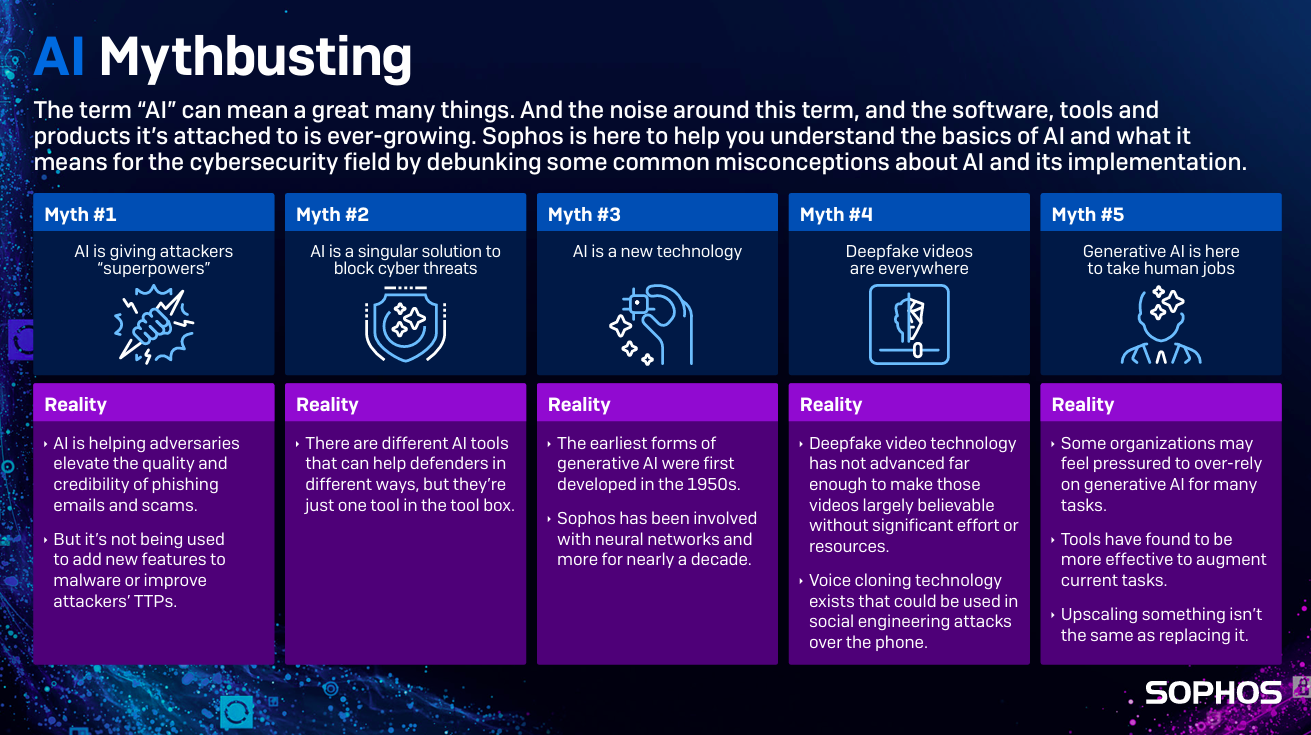
AI Mythbusting
This document dispels prevalent myths surrounding AI's role in cybersecurity, offering a grounded perspective on its capabilities and limitations. While AI can enhance the sophistication of phishing attacks, it does not provide attackers with revolutionary new tools or significantly advance malware development. Similarly, AI should be viewed as a complementary defense mechanism rather than a standalone solution, working best when integrated with other security measures. The analysis also clarifies that AI is not a recent innovation, with generative AI tracing its roots to the 1950s and Sophos utilizing neural networks for nearly a decade.
The discussion further addresses misconceptions about deepfakes and AI's impact on employment. High-quality deepfake videos remain uncommon due to resource constraints, though voice cloning poses tangible risks for social engineering. Regarding workforce concerns, the document emphasizes that AI primarily augments human tasks rather than replacing jobs, serving as a productivity tool rather than a substitute for human expertise. These insights advocate for a balanced, realistic approach to AI adoption in cybersecurity strategies.
Fill in the details below and download your copy now and arm yourself with the tools for success!

Our recommendation


The City of Santa Monica Improves Data Security for Backups and File and Object Services

Explore our Content
Subscribe to Insights2Content
Get the latest growth hacks and trends in your inbox



